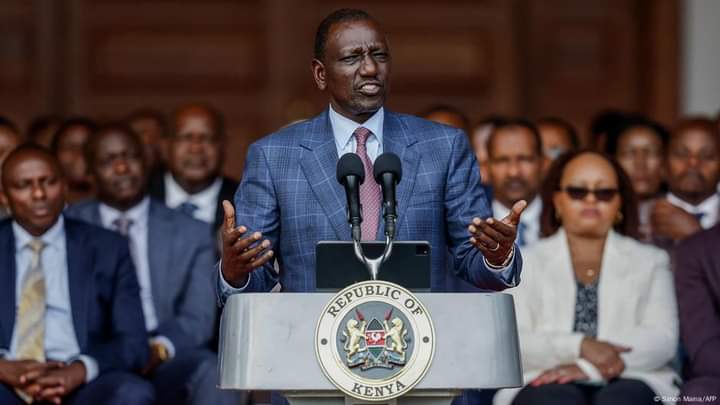By Adeyemi Adekunle
Kenyan President William Ruto unveiled a newly reshuffled cabinet on Friday, reappointing several ministers he had dismissed just last week.
The announcement, made during a nationally televised address, is part of Ruto’s efforts to address grievances voiced by the country’s youth, who have been at the forefront of the recent demonstrations.
The new cabinet comprises 11 appointments, six of whom are returning ministers from Ruto’s previous administration. Notably, the ministers of Interior, Defense, Environment, and Lands have been reinstated, while the portfolios of two other ministers have been altered. Ruto assured the nation that additional appointments would be forthcoming as his administration continues to restructure.
“Today marks a new chapter in our government’s commitment to addressing the pressing concerns of our citizens, particularly the youth,” Ruto declared from State House in Nairobi. “We are dedicated to creating a government that is responsive, transparent, and efficient.”
The cabinet reshuffle follows a tumultuous week in which President Ruto dismissed the majority of his cabinet members. This move was widely seen as an attempt to cut government spending and to placate the increasingly vocal youth protestors.
The demonstrators, who have been rallying against corruption, economic mismanagement, and proposed tax hikes, successfully pressured Ruto to withdraw a $2.7 billion tax increase.
Since mid-June, the protests have claimed the lives of over 50 individuals, escalating tensions in the country. The youth, representing a significant portion of Kenya’s population, have vowed to continue their demonstrations until tangible changes are implemented and Ruto steps down from office.
“We are tired of empty promises and lack of action,” said 23-year-old protestor Mary Wanjiru. “Our demands are clear: end corruption, create jobs, and provide us with a future worth fighting for.”
The protests, which began as peaceful demonstrations, have at times turned violent, leading to clashes with security forces. The government’s heavy-handed response has drawn criticism from human rights organizations and the international community, calling for restraint and dialogue.
“Violence is not the answer,” said John Kamau, a spokesperson for the Kenyan Human Rights Commission. “The government must engage in meaningful dialogue with the youth and address their legitimate concerns.”
President Ruto’s reappointment of familiar faces has sparked mixed reactions among political analysts and the general public. While some see it as a pragmatic move to stabilize his administration, others view it as a sign of political expediency rather than genuine reform.
“This cabinet reshuffle is merely a cosmetic change,” argued political analyst Peter Mwangi. “Without addressing the root causes of the protests, such as systemic corruption and economic inequality, these measures will do little to appease the disillusioned youth.”
As Kenya navigates this period of political turbulence, the pressure on President Ruto’s administration to deliver on its promises has never been greater. The coming weeks will be crucial in determining whether the government’s efforts to reform will be sufficient to quell the unrest and restore confidence among its citizens.
For now, the streets of Nairobi remain charged with the fervor of a youth movement determined to hold their leaders accountable and to shape the future of their nation.




